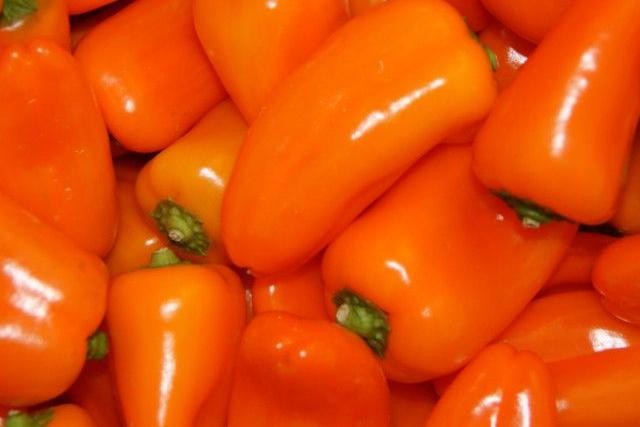The pepper is native to Bolivia and Peru. It was brought to the Old World by Columbus on his first voyage (1493). By the sixteenth Century its cultivation was already widespread in Spain, from where it was distributed to the rest of Europe and the world with the help of the Portuguese.
Description and Characteristics:
The pepper has three ways of being consumed: fresh, for paprika and for preserves. Demand for fresh peppers all year round from the European markets, has grown dramatically and has led to the development of greenhouse cultivation along all of the Spanish Mediterranean coast. Moreover it is one of the greenhouse vegetable crops that are most cultivated in our country. Spain is the fourth largest producer of peppers after China, Mexico and Turkey.
The pepper is a perennial herbaceous plant, with annual crop cycle and size variable between 0,5 meters (in certain outdoor varieties) and more than 2 metres (the majority of the hybrids grown in greenhouses). Its root system is pivotal and deep. The main stem is erect and has limited growth. From a certain height 2 or 3 branches grow (depending on the variety) and it continues branching out until the end of its cycle. The leaves are whole, lanceolated and bright green, with a very sharp apex and a long and inconspicuous petiole. The size of the leaves is variable depending on the variety; some correlation exists between the size of the mature leaf and average fruit weight. The single flowers can be found at each node of the stem, they are small and have a white corolla. They are self-pollinating. The use of bumblebees is recommended or using mechanical means to facilitate the movement of pollen and therefore guarantee fertilization. The fruit is a hollow semi-cartilaginous and depressed berry, variable in color (green, red, yellow, orange, violet or white), some varieties ranging from green to orange and red as they ripen. Its size is variable and can weigh from a few grams to over 500 grams.
Pepper varieties are classified into three main groups:
- Spicy flavour varieties: widely cultivated in South America, they tend to be the long and thin variety.
- Varieties for obtaining paprika: they are a subgroup of the sweet varieties.
- Varieties of sweet pepper (within this group there are three different types):
- Californian Type: short fruit (7-10 cm), wide (6-9 cm), with three or four well-marked segments, with the calyx and the base of the stem at or below shoulder level and with more or less thick flesh (3-7mm). They are the most temperature demanding cultivars, therefore planting is done early (from mid-May to early August, depending on the climate of the area), to extend the production cycle and avoid development problems due to an excessive decrease in night-time temperatures.
- Lamuyo Type: so named in honour of the variety obtained by INRA in France (National Institute for Agricultural Research), that are long and square with thick flesh. Cultivars belonging to this type are usually more vigorous (larger size and longer internodes) and less sensitive to the cold than the California type, so they are often grown in later cycles.
- Italian Type: elongated, narrow, pointed, with thin flesh, more tolerant to the cold, they are typically grown in a single cycle, being planted in September or October and harvested between December and May, producing 6-7 kg / m2.
In Motril the Italian type is generally grown in the autumn-winter cycle and the Lamuyo type in the spring-summer cycle.
NUTRITIONAL VALUE
The benefits that peppers provide us with are:
- They contain vitamin C (especially red peppers) with a higher content than certain citrus fruits such as oranges or strawberries.
- They contain a large quantity of carotenoids, its antioxidant property being one of its major properties.
- Other vitamins such as the B group, these being B1, B2, B3 and provitamin A that when consumed are beneficial for our bones, hair, mucous membranes and immune system protection.
- The mineral content of the different peppers is varied, but among them potassium can be highlighted as having the largest proportion followed by calcium, phosphorus and magnesium.
- The benefits that minerals provide our body with are regulating the water in our body’s cells, regulating muscle activity, intervention in the synthesis of genetic material, proper functioning of the immune system through the generation of red and white blood cells, smooth functioning of the bowel and digestive system, and they are very important for the formation of bones and teeth.
- Finally, peppers are widely used in weight-control diets, for diuretic and depurative uses, for people with digestive problems, for pregnant women and children, and for preventing certain diseases of intestinal origin.
Areas where peppers are grown in Motril:
This crop is grown in greenhouses in Las Zorreras, Los Tablones, the plain of La Garnatilla, El Puntalón and Villanueva.

